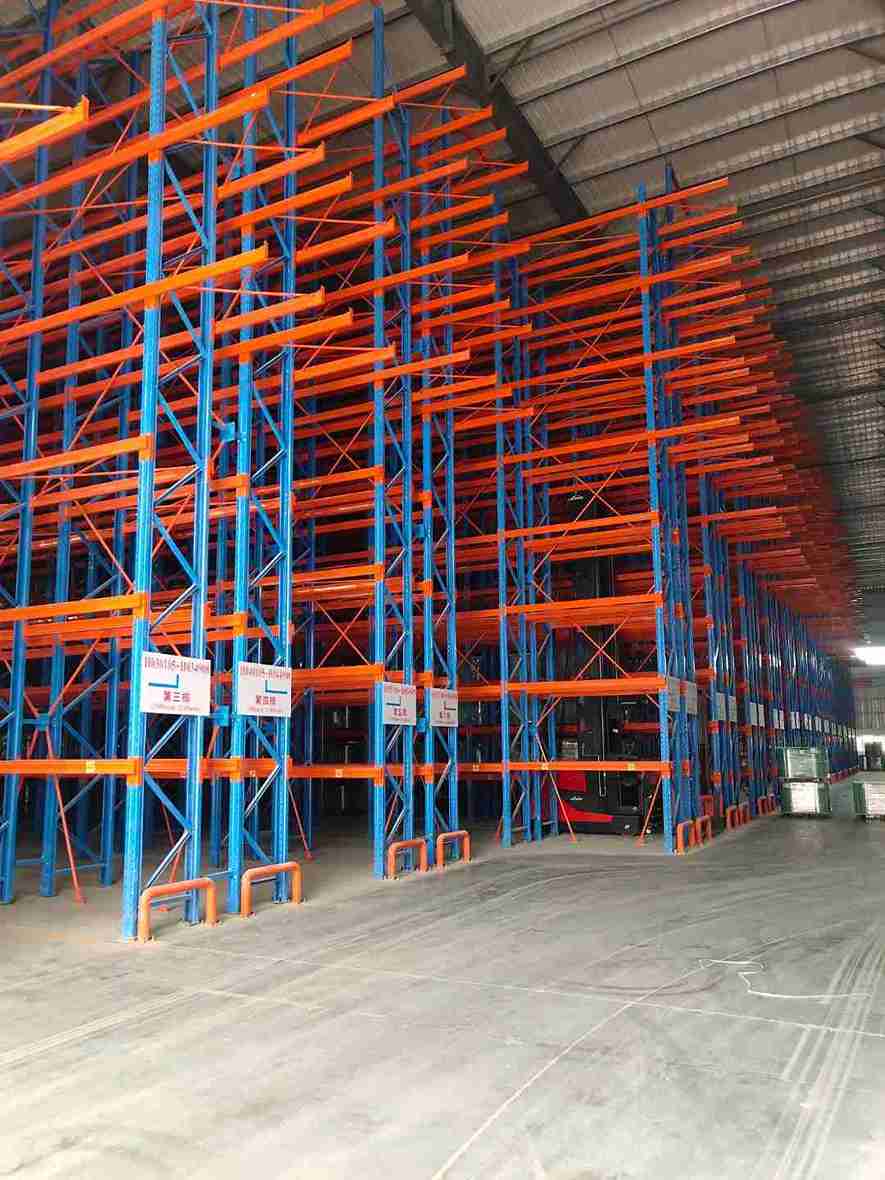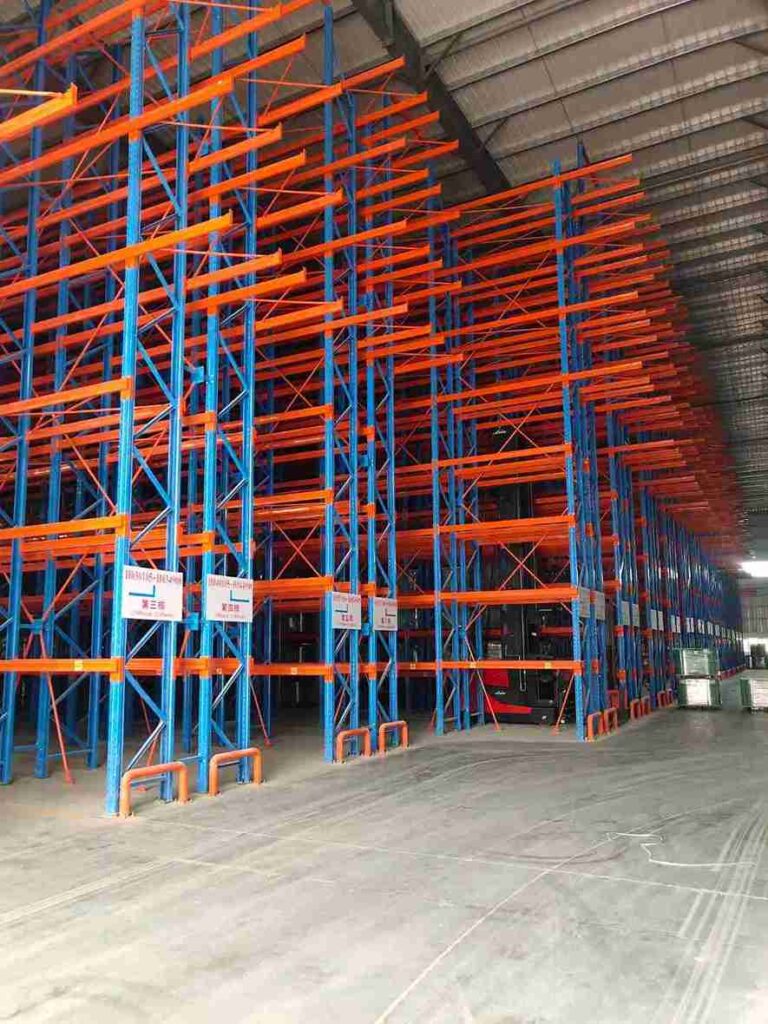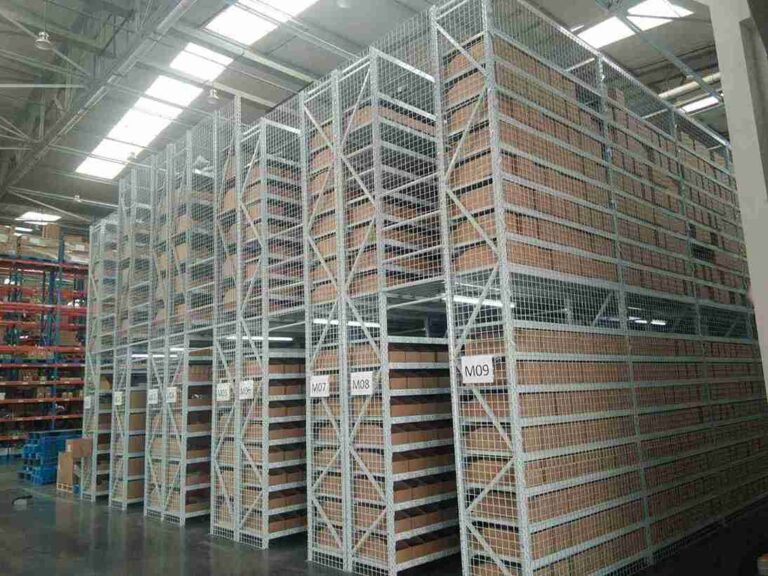📐 "First 50 Enterprise Queries Get Custom 3D Warehouse Design" Plan

Introduction: Why Very Narrow Aisle Racking is a Game-Changer
In today’s competitive warehousing landscape, maximizing storage capacity without expanding floor space is a top priority. Very Narrow Aisle (VNA) racking has emerged as one of the most efficient high-density storage solutions, allowing warehouses to store up to 60% more pallets in the same footprint compared to traditional systems. But is very narrow aisle racking the right choice for every operation?
This comprehensive guide dives deep into the benefits, challenges, costs, and suitability of very narrow aisle racking, helping warehouse managers, logistics professionals, and business owners make an informed decision. Unlike generic overviews, this article provides actionable insights, real-world comparisons, and expert recommendations—ensuring readers gain practical knowledge that can directly impact their storage strategy.

H1: What is Very Narrow Aisle Racking?
Very Narrow Aisle racking (VNA racking) is a high-density storage system designed to optimize warehouse space by minimizing aisle widths—typically between 1.5 to 2 meters. Unlike conventional selective racking, which requires 3-meter+ aisles for standard forklifts, very narrow aisle racking relies on specialized narrow-aisle forklifts (NAFs) or guided vehicles to navigate tight spaces.
H2: How Does Very Narrow Aisle Racking Work?
The efficiency of very narrow aisle racking depends on three key components:
- Specialized Forklifts – Turret trucks or guided vehicles with articulating forks allow precise maneuvering in tight aisles.
- Precision Racking Design – The system must be engineered for exact clearances to prevent collisions.
- Guidance Systems – Wire or rail-guided forklifts ensure safe, repeatable movements without operator error.
Because traditional forklifts cannot turn in such confined spaces, very narrow aisle racking requires strict operational protocols to maintain safety and efficiency.
H1: Key Benefits of Very Narrow Aisle Racking
H2: 1. Unmatched Storage Density
The primary advantage of very narrow aisle racking is its ability to maximize pallet positions per square meter. By reducing aisle widths to 1.5m or less, warehouses can store significantly more inventory without expanding their footprint.
Example: A 10,000 sqm warehouse using very narrow aisle racking can store 30-40% more pallets than a traditional selective racking system.
H2: 2. Superior Vertical Space Utilization
While standard racking systems max out at 8-10 meters, very narrow aisle racking can extend beyond 15 meters—making it ideal for high-bay warehouses. This vertical advantage is particularly valuable in urban warehouses, where land costs are high.
H2: 3. Faster Order Picking & Improved Efficiency
With narrower aisles, forklift travel time between pallets decreases, leading to:
- Faster order fulfillment
- Higher throughput rates
- Reduced labor costs
Automated very narrow aisle racking systems (such as AS/RS integration) can further enhance speed and accuracy.
H2: 4. Long-Term Cost Savings
Though the initial investment in very narrow aisle racking is higher, the long-term ROI is compelling:
- Lower real estate costs (smaller footprint = reduced rent)
- Reduced energy consumption (shorter travel distances for forklifts)
- Higher labor productivity (faster operations mean fewer staff needed)
H1: Challenges & Considerations of Very Narrow Aisle Racking
While very narrow aisle racking offers significant advantages, it’s not suitable for every warehouse. Key challenges include:
H2: 1. Higher Upfront Costs
- Specialized forklifts (turret trucks, guided vehicles) cost 2-3x more than standard forklifts.
- Precision racking installation requires expert engineering, adding to expenses.
H2: 2. Requires Skilled Operators
- Drivers must undergo certified VNA training due to tight maneuvering.
- Human error can lead to rack damage, accidents, or downtime.
H2: 3. Limited Accessibility for Slow-Moving Inventory
Unlike selective racking, very narrow aisle racking restricts direct access to pallets. This makes it less ideal for FIFO (First-In, First-Out) operations unless combined with flow racking.
H2: 4. Strict Warehouse Layout Requirements
- Floor flatness must be near-perfect (≤±3mm variance).
- Column spacing must align precisely with racking configuration.
- Ceiling height must accommodate vertical expansion (minimum 10m recommended).
H1: Is Very Narrow Aisle Racking Right for Your Warehouse?
H2: Best For:
✔ High-volume warehouses needing space optimization
✔ Operations with fast-moving SKUs (e.g., e-commerce, 3PL, retail distribution)
✔ Facilities with high ceilings (12m+)
H2: Not Ideal For:
✖ Low-budget operations (due to high initial costs)
✖ Warehouses with uneven floors (requires costly leveling)
✖ Slow-moving inventory (better suited for drive-in racking)
H1: Very Narrow Aisle Racking vs. Other Storage Systems
H2: Very Narrow Aisle Racking vs. Selective Racking
| Feature | Very Narrow Aisle Racking | Selective Racking |
|---|---|---|
| Aisle Width | 1.5-2m | 3-3.5m |
| Storage Density | High | Medium |
| Accessibility | Restricted | Full (direct access) |
| Cost | Higher upfront | Lower initial cost |
H2: Very Narrow Aisle Racking vs. Drive-In Racking
- Drive-in racking is better for FIFO/LIFO storage but has lower selectivity.
- Very narrow aisle racking offers faster picking but requires specialized equipment.
H1: How to Implement Very Narrow Aisle Racking Successfully
H2: Step 1: Conduct a Feasibility Study
- Analyze inventory turnover, SKU velocity, and warehouse dimensions.
- Consult a racking specialist for layout optimization.
H2: Step 2: Choose the Right Equipment
- Turret trucks (for flexibility) vs. guided vehicles (for automation).
- Ensure forklifts match racking height & load capacity.
H2: Step 3: Optimize Warehouse Layout
- Minimize dead space with CAD planning.
- Ensure floor flatness meets VNA standards.
H2: Step 4: Train Operators Thoroughly
- Certified VNA training programs reduce accidents.
- Implement safety sensors & collision avoidance tech.
H1: Cost Breakdown of Very Narrow Aisle Racking Systems
| Component | Estimated Cost |
|---|---|
| VNA Forklift | 150,000 |
| Racking Structure | 100 per pallet position |
| Installation | 30,000+ |
| Floor Leveling | 15 per sqm (if needed) |
Total investment can range from 500,000+, but ROI is strong for high-throughput warehouses.
H1: Future Trends in Very Narrow Aisle Racking
- Automated Guided Vehicles (AGVs) reducing labor dependency.
- AI-powered warehouse management systems (WMS) optimizing slotting.
- Modular racking designs for easier reconfiguration.
Conclusion: Is Very Narrow Aisle Racking Worth It?
Very Narrow Aisle racking is a transformational solution for warehouses needing high-density storage, but it’s not a one-size-fits-all system. If your operation has fast-moving inventory, high ceilings, and a budget for specialized equipment, very narrow aisle racking can dramatically boost efficiency and cut long-term costs. However, smaller or low-budget warehouses may find selective or drive-in racking more practical.
Before committing, consult a racking expert, analyze your SKU velocity, and ensure your facility meets structural requirements. When implemented correctly, very narrow aisle racking transforms warehouse space utilization.
FAQs
1. Can standard forklifts be used with very narrow aisle racking?
No, very narrow aisle racking requires specialized narrow-aisle forklifts (turret trucks or guided vehicles) due to tight clearances.
2. What’s the minimum ceiling height for very narrow aisle racking?
Ideally 10m+, but 12m+ is optimal for maximizing vertical storage.
3. How long does very narrow aisle racking installation take?
Typically 4–12 weeks, depending on warehouse size and modifications needed.
4. Can very narrow aisle racking be automated?
Yes, automated storage and retrieval systems (AS/RS) can integrate with very narrow aisle racking for fully automated operations.
5. What industries benefit most from very narrow aisle racking?
E-commerce, 3PL, food & beverage, and manufacturing see the highest ROI due to high inventory turnover.




